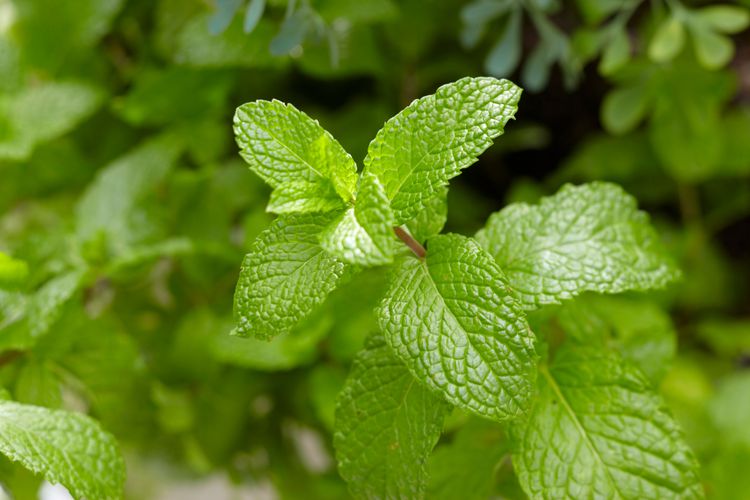When you want more mint plants for your patio or garden, you don’t have to buy new plants if you know how to propagate mint. Whether you want to reproduce an unusual variety, expand your supply of fresh mint, or root mint from a grocery store, this herb is easy to propagate using a few different methods. This simple step-by-step guide will walk you through how to propagate mint from root cuttings, stem cuttings, or starting cuttings in water.
How to Propagate Mint from Root Cuttings
Mint has creeping underground stems called rhizomes. These rootlike stems can be divided to grow new mint plants by following these steps:
1. Prepare a container.
Fill a 6-inch or larger container with potting soil, firming the soil to just below the rim. Water the soil and wait for the water to drain. Using a pencil or chopstick, poke three planting holes 1 to 2 inches deep and at least 2 inches apart in the soil where you intend to plant the root cuttings.
2. Take root cuttings.
In the spring or fall, lift a healthy mint plant from the ground or slide it out of its pot. Select rhizomes that have plenty of buds where new growth will develop. Divide the roots into 1½ to 3-inch sections with an angled cut at the base.
3. Plant the rhizome cuttings.
Position the rhizome cuttings vertically with the bud toward the top. Space them 1 to 2½ inches apart, and water the cuttings to settle the soil around them.
4. Place the potted cuttings in a bright location.
Bright light is ideal, but avoid direct sunlight. Cover the pots with a clear plastic bag and don’t water the cuttings until roots develop. New roots form in two to three weeks.
5. Transplant the rooted cuttings.
Plant the rooted cuttings in larger containers filled with potting mix and continue growing your new mint plants indoors. Or harden off the rooted cuttings and move them outdoors.
Rhizomes help mint plants spread vigorously, and since the plant will regrow from small pieces of rhizome, it's difficult to completely remove once you've planted mint. Before placing mint in a garden bed, it's best to confine it in a pot and sink the pot into the ground so that the rim is 2 inches above the ground.
How to Propagate Mint from Stem Cuttings
Taking stem cuttings from an existing mint plant is a little easier than root cuttings because you don't need to dig up the plant first. Follow the steps below to propagate mint from stem cuttings in soil.
1. Prepare a container.
Fill a 6-inch-diameter pot with potting mix. Using a pencil or chopstick, poke three planting holes 1 to 2 inches deep in the potting mix where you intend to plant the mint cuttings.
2. Take stem cuttings.
Take 4-inch-long stem cuttings from a healthy mint plant using a sharp, clean knife or shears. Make your cuts just above a node (the point where a set of leaves attaches to the stem).
3. Prepare cuttings.
Carefully trim the base of each cutting just below a node. Then remove the leaves on the bottom third of the stems. Leave the top two or three leaves to feed the cutting as it roots.
4. Plant cuttings.
Position the stem cuttings in the planting holes so that the bottom 1 to 2 inches of the mint stems are buried and the leaves are above the soil line. Make sure a few of the plant nodes are below the soil; the roots develop from the nodes. Firm the soil around the base of the cuttings to keep them upright.
5. Add water and a cover.
Water the soil until the excess drains out of the bottom of the pot. Cover the cuttings with a clear plastic bag supported on stakes so the bag doesn't touch the leaves. After about four weeks, the mint cuttings will be rooted. You’ll know the cuttings have rooted when they begin to produce new growth.
6. Transplant the rooted cuttings.
Keeping the soil around the roots intact, separate each new plant and transplant them into their own containers. Continue growing them indoors in a brightly lit location, or harden them off and move them outdoors.
Propagating Mint in Water
You can double your supply of fresh mint in just a few weeks by propagating mint in water instead of soil. Similar to the directions for rooting stem cuttings in soil, it’s as easy as cutting a stem off a healthy mint plant, stripping its lower leaves, and placing the stem into water instead of a pot of soil. Be sure to change the water every few days. Once you see that the roots have grown, plant the cuttings in a container of soil.




















